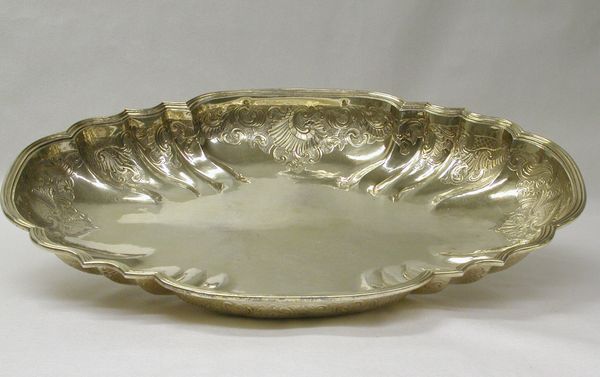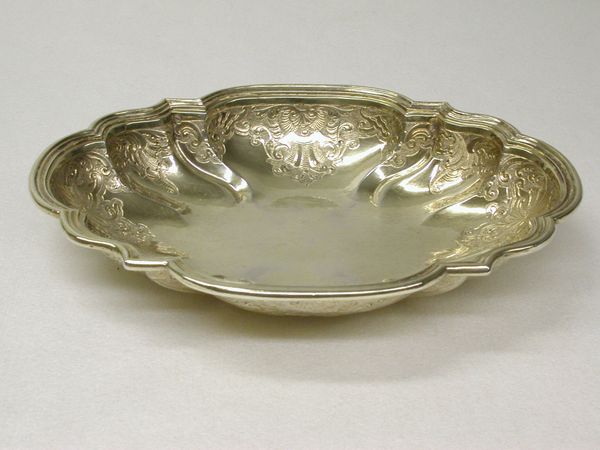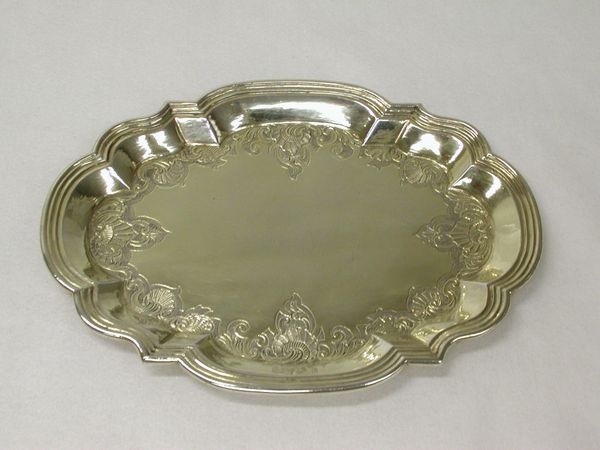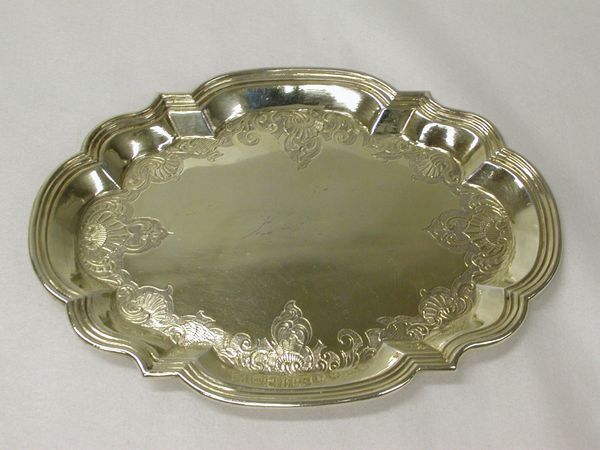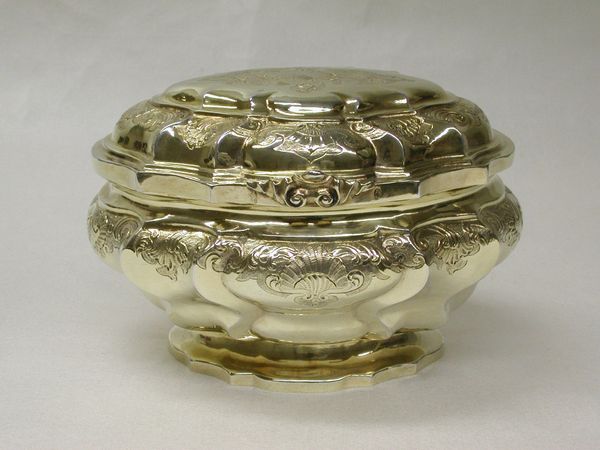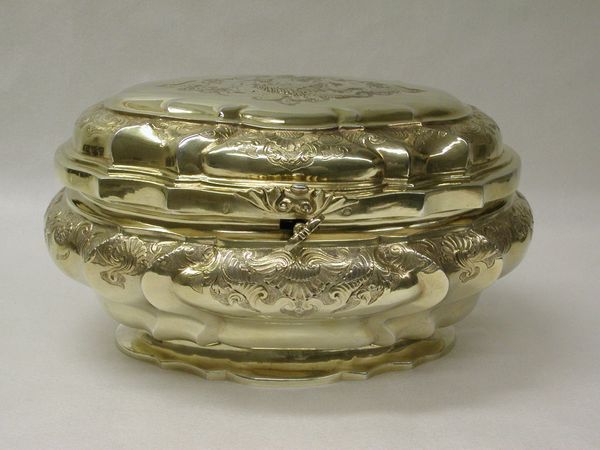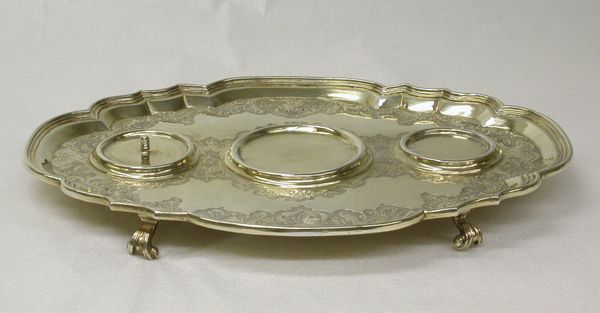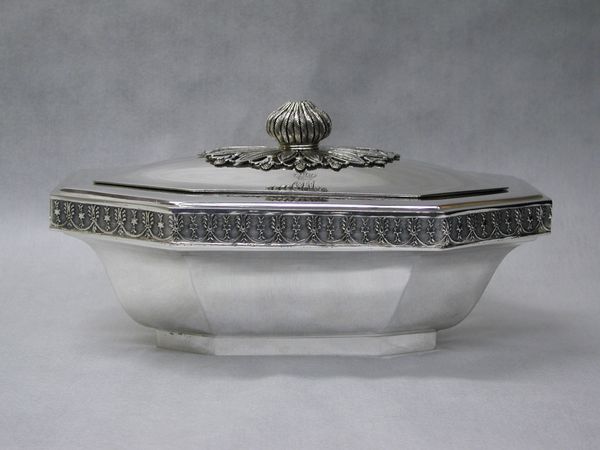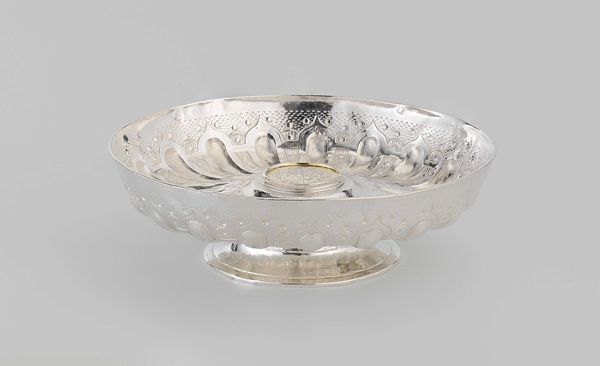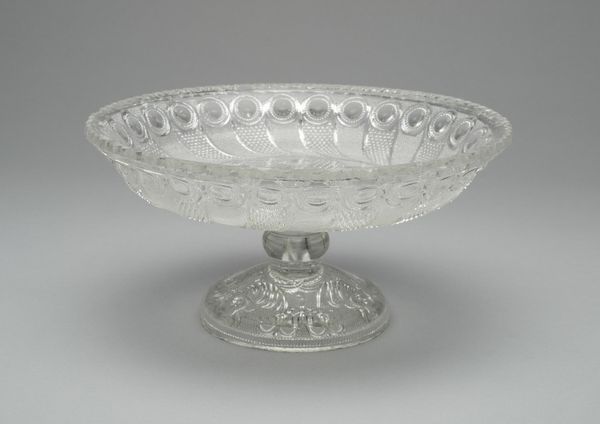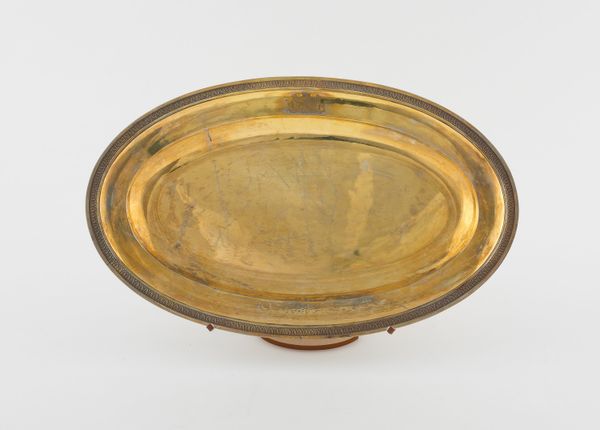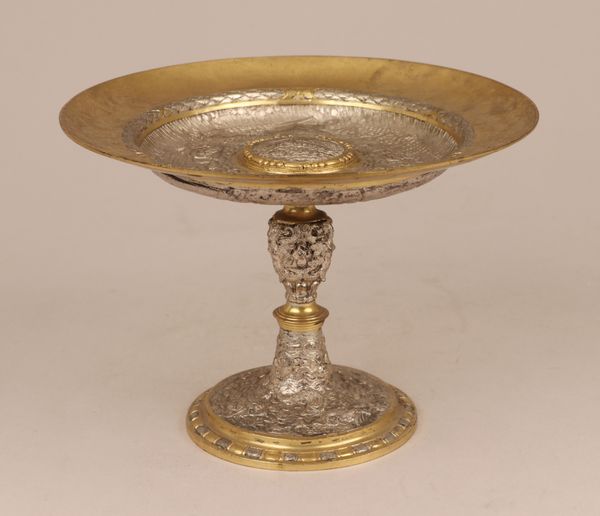
silver, sculpture
#
silver
#
baroque
#
sculpture
#
sculpture
#
decorative-art
Dimensions: Overall: H. 2 5/8 x W. 11 3/8 x D. 8 5/8 in. (6.7 x 28.9 x 21.9 cm)
Copyright: Public Domain
Editor: Here we have the “Tazza,” crafted between 1738 and 1750 from silver, by Johann Conrad Lotter. The way the light catches the silver makes it gleam; the intricate floral carvings around the base make it such a detailed object. What structural elements define this as Baroque? Curator: Observe the elaborate curvature of the base, its undulations are quintessential Baroque. The surface ornamentation, too, is far from minimalist, the detailed engravings interrupt its reflective property, dispersing light to generate a multifaceted visual interplay. Consider also, how form mediates function in this object; would a streamlined shape have offered similar utility? Editor: So it’s about maximizing visual complexity? How much does utility even factor in? Curator: It does play a role, although the Baroque emphasizes grandeur and sensory richness over purely pragmatic considerations. The "Tazza," in its composition, demonstrates a mastery of silversmithing, but more so an ability to transform function into theatre, utility into excess. Note how its contours break up shadows to affect our perception. Editor: So it is manipulating the medium and light through the form to create a visually heightened experience. Curator: Precisely! Now consider this form, this deployment of silver. Where else, or perhaps, in what structures might similar deployment of such visual dynamics be seen? What might this indicate? Editor: This exercise of breaking it down has revealed Baroque art isn’t just visually loud. Every aspect serves to create complexity in material, texture and form. Thank you. Curator: And through a material examination, we reveal a history of craft and opulence.
Comments
No comments
Be the first to comment and join the conversation on the ultimate creative platform.
